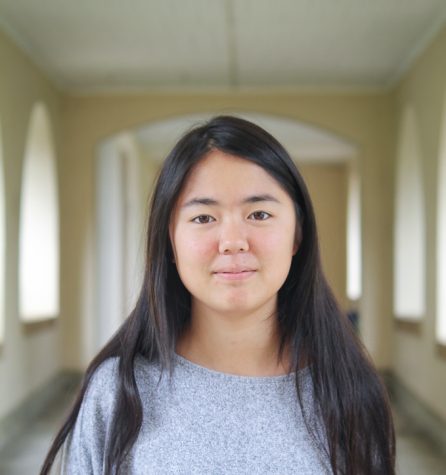Dozens express opposition towards instructional lead pay reduction
May 15, 2020
Parents, students and teachers spoke out against a proposal to lower pay for instructional leads at the Palo Alto Unified School District Board of Education meeting on Tuesday, hoping to protect the VAPA, CTE and PE programs in times of crisis.

The district is currently looking at potential budget reductions in order to account for $9.9M increased expenditures caused by the COVID-19 pandemic. One of the proposed reductions would replace the salaried pay of one release period of instructional leads ($20,000 – $25,000 annually) with a $2,000 stipend.
“We still have department leads on top of instructional leads, with a well-resourced guidance program, site administration, team teaching in some of the arts — which is not common in most places — full-time TOSAs, and production periods,” Supt. Don Austin said. “I would not think that we are under resourced; we are heavily resourced in these areas.”
However, VAPA, CTE and PE instructional leads only receive one release period while the other five department instructional leads receive two. As a result, VAPA, CTE and PE instructional leads receive only the $2,000 stipend for carrying out the same duties of the instructional lead. According to Palo Alto High School photography teacher Margo Wixom, this is equivalent to being compensated $3 per hour.
“[The proposal] is something between a joke, insult, and ignorance on the part of highly paid district officials,” Wixom wrote in an email to the Paly Voice. “They are so out of touch with offering that figure for a stipend that it is shocking.”
Many students, parents, and teachers spoke at the board meeting against the pay reduction, praising the VAPA and CTE programs and their instructional leads.
“We absolutely need instructional leads to coordinate all these diverse programs and I know that we would not be at the high quality without our instructional leads,” Gunn High School parent Nancy Krop said. “Administrators come and go at our high schools, but Todd Summers [VAPA instructional lead at Gunn] is the one stability there with his 20 years of expertise.”
With both PAUSD high schools having nationally recognized arts programs, many people argued that instructional leads in these departments are especially important.
“Instructional leads are conduits that connect students, parents, teachers, and administrators at all levels,” Diane Ichikawa, Gunn representative of Palo Alto Educators Association, said. “It’s a unique position, and our secondary school structure will crumble without it. If anything, we will need instructional leads even more this year as we embark on some incredibly unfamiliar waters.”
“The instructional lead teachers at Gunn are influential at the local and state level, and organize local adjudicated events that enhance our musical experiences as students,” Gunn senior Elizabeth Mumford said. “It was our reputation as a program and ensemble that gave us the opportunity to perform at Carnegie Hall.”
Others argued that the arts programs play a large role in the mental health of students.
“In the last 10 years PAUSD has invested in programs for Social-Emotional Wellness to counter the intensive emotional pressures that our students experience,” Wixsom stated in a letter sent to VAPA students and parents. “Participation in the Creative and Media Arts has always been a mediating factor to promote wellness and ease stress for a majority of our students.”
Gunn senior Abigail Sullivan attested to this at the board meeting.
“I can surely say that without my choir family, I would not be here today,” Sullivan said.
At the inception of the instructional lead position, teacher evaluation was a responsibility of the instructional lead. As such, CTE, VAPA and PE instructional leads received one less paid prep period because those departments are significantly smaller than academic departments. However, teacher evaluation is no longer a responsibility of the instructional lead position.
“Now, regardless of the size of our departments, the jobs are essentially the same,” Peter Diepenbrock, PE teacher and instructional lead at Paly, said. “Same meetings, same responsibilities, so there really doesn’t make any sense anymore to have a discrepancy between CTE, VAPA, PE and the other five departments.”
Some parents digitally attending the board meeting asked for a way they themselves could directly financially support the art programs.
“If the district cannot fund performing arts, I would ask them to consider a waiver of the PiE rule so that Paly parents can fund Paly, and that this can be done across the district for art programs,” Paly parent Giselle Galper said. “As a two-year choir and art parent [and] a two-year band parent, I would like to support these positions directly.”
Some argued that this proposal indicates that art is not as valued as other school departments.
“My experience as an Arts teacher for the last 20 years in Palo Alto was that these ‘stipending’ decisions are a direct choice to disenfranchise the Arts in PAUSD as ‘optional programs’ and continue to whittle away at the Arts in PAUSD,” Wixsom said.
Michael Najar, current Paly choir teacher and VAPA instructional lead from 2008 to 2018, also spoke on this topic.
“I am aware of and understand that there are personnel in the district that are going to lose their job and I am heartbroken for them,” Najar said. “This is not about a job. It’s about a value, and if you love artists like I do, then you won’t cut the .2 [the 20% of the instructional lead salary in question].”
The board members are divided in their stances.
“If we’re looking for places to make a difference in equity, this is the kind of program that does it. But I don’t know if we can have that same impact if we don’t have some sort of leadership fulcrum there, and right now that’s our instructional lead for the VAPA program,” Caswell said. “Next year… if kids aren’t going to be on campus as much as they have been in the past, we’re going to need to find ways to virtually connect kids, and we can do that with the arts.”
“We have a huge amount of uncertainty about how long this situation will last and what our financial future will look like, so we need to be conservative and I think we need to be pretty aggressive in making cuts,” board member Ken Dauber said. “In terms of the instructional lead question, I do not have want to have a long discussion about this at another board meeting. I buy Dr. Austin’s argument that, while desirable, this is an expenditure that we cannot at this point afford, and we are not posing a fundamental threat to our arts or other programs.”



